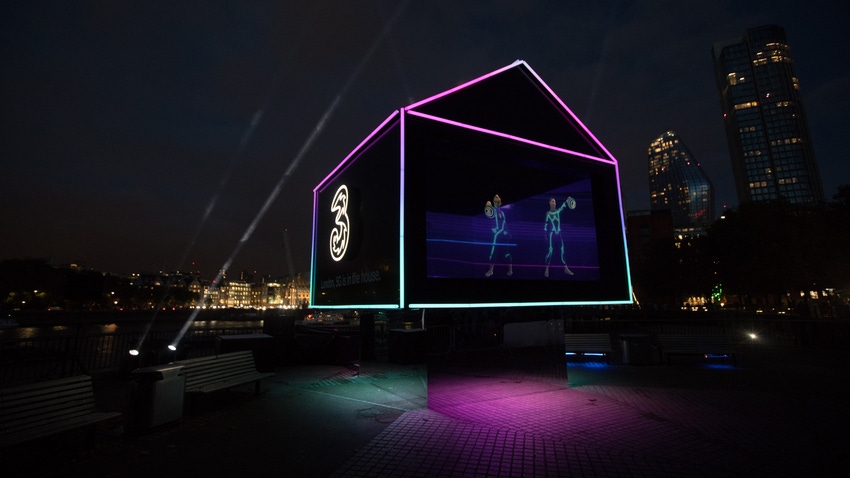Three uses first loss since 2010 to press case for Vodafone merger
CEO Robert Finnegan seizes on a miserable financial result as evidence four mobile networks are one too many.

Three UK's latest results won't please investors, but they provide the perfect sob story to reinforce its case about the need for a merger with Vodafone. After it had managed an operating profit for 12 years in a row, the telco ran up a 2023 loss it quickly seized on as evidence that four UK mobile networks are too many for all to make a decent return.
Despite reporting a 3% uptick in sales, to about £2.6 billion (US$3.3 billion), Three swung from a £77 million ($98 million) operating profit in 2022 to a £117 million ($149 million) loss last year. Inflationary pressures had something to do with that, insisted Three. But the rate of UK inflation was far worse the year before. The sharp increase in operating expenses – up 23%, to more than £1 billion ($1.3 billion) – was also blamed specifically by Three on "higher site numbers" along with growing IT expenses and "recent higher network investment."
The spending uptick, then, came in the same year Three and Vodafone agreed to combine their operations and create what could be the biggest UK mobile operator by customer numbers. But it's a controversial move that would leave the UK with just three mobile networks. From the perspective of many European regulatory officials, four are needed to ensure consumers are not worse off.
Post-Brexit, the UK's Competition and Markets Authority is taking a long, hard look at the plans. Three and Vodafone, accordingly, are on the campaign trail, insisting the UK will be an uber-competitive 5G nirvana of joyous smartphone users and profitable telcos, where mobile masts are as dense as ancient woodland.
Three's company, four's a crowd
Three CEO Robert Finnegan wasted no time in using the latest set of results to press the case, saying "the cost of rolling out and maintaining our 5G network, and our commitment to improving connectivity across the UK, has impacted our profitability with negative reported EBIT [earnings before interest and tax] for the first time since 2010."
He followed: "This financial performance is clearly unsustainable despite scaling back our 5G investment." That reference to "scaling back" is ambiguous given Three's commentary on the previous page of today's statement about "recent higher network investment." Yet Three did slash capital expenditure last year by as much as 39%, to just £454 million ($580 million).
The revelation of this in the operator's latest financial statements followed a Three press conference in Glasgow last month where Iain Milligan, its chief network officer, said 5G network expansion had stopped in late 2022 when the network had reached about 62% of the UK population. "The big reason for that is the cost of deploying 5G is huge, and there are lots of other things to be focusing on," he told reporters there.
Finnegan's basic case is relatively straightforward, and one can appreciate the logic. Any company must shoulder substantial costs to build a nationwide network. If customers were divided three instead of four ways, recouping the investment would be much easier, even if prices stayed the same and site numbers rose.
Three had only 10.6 million "active" customers last year, making it the smallest of the four telcos. But Vodafone-Three would serve about 29.2 million, based on the latest Vodafone figures. Each company maintains roughly 18,000 macro sites across the UK, but around 10,000 would apparently be decommissioned under the merger plans, leaving the new-look player with a total of about 26,000.
Nevertheless, Three's high costs may partly be its own fault. Most UK operators have used single radio access network (RAN) technology to host different mobile generations on the same platform. Three, by contrast, has more vendors than generations, using Nokia for 3G, Samsung for 4G and a mixture of Huawei and Ericsson for 5G.
Huawei was introduced in 2019 to replace Samsung and build a combined 4G and 5G network. But that plan had to be aborted when UK authorities banned the Chinese vendor on security grounds. While Ericsson was subsequently introduced, Three is still removing Huawei equipment (it took out 350 sites last year to comply with "requirements of high-risk vendor legislation," it notes). And Samsung's equipment is still used across 7,000 sites, Milligan revealed in Glasgow.
Unhappy rivals
On the merger front, the problem for Three and Vodafone is not just opposition from consumer groups and some regulatory officials but also the objections of BT and Virgin Media O2 (VMO2), the other two network operators. Executives within those companies are known to be concerned about the market distortions a merger would produce. Vodafone-Three would have a huge quantity of spectrum and several thousand more sites than either of its rivals. Three's top executives evidently do not see this as any kind of issue.
"I would not be entertaining some of the noise being made by other operators on the C-band or spectrum holdings generally, because asymmetry is good," said David Hennessy, Three's chief technology officer, when he met Light Reading in January. "We are targeting a network of almost 26,000 sites, and if that forced investment from VMO2 and BT, they may go to the same."
The other concern is about the implications for the UK's infrastructure partnerships. Three currently shares a network with BT through a joint venture called MBNL. Vodafone and VMO2 have something similar called Beacon. A tie-up would therefore have a foot in each camp and might be able to exploit its position to the detriment of rivals. It's a subject on which Hennessy was not prepared to comment. But it could be the hardest issue to resolve.
Read more about:
EuropeAbout the Author(s)
You May Also Like




_International_Software_Products.jpeg?width=300&auto=webp&quality=80&disable=upscale)







